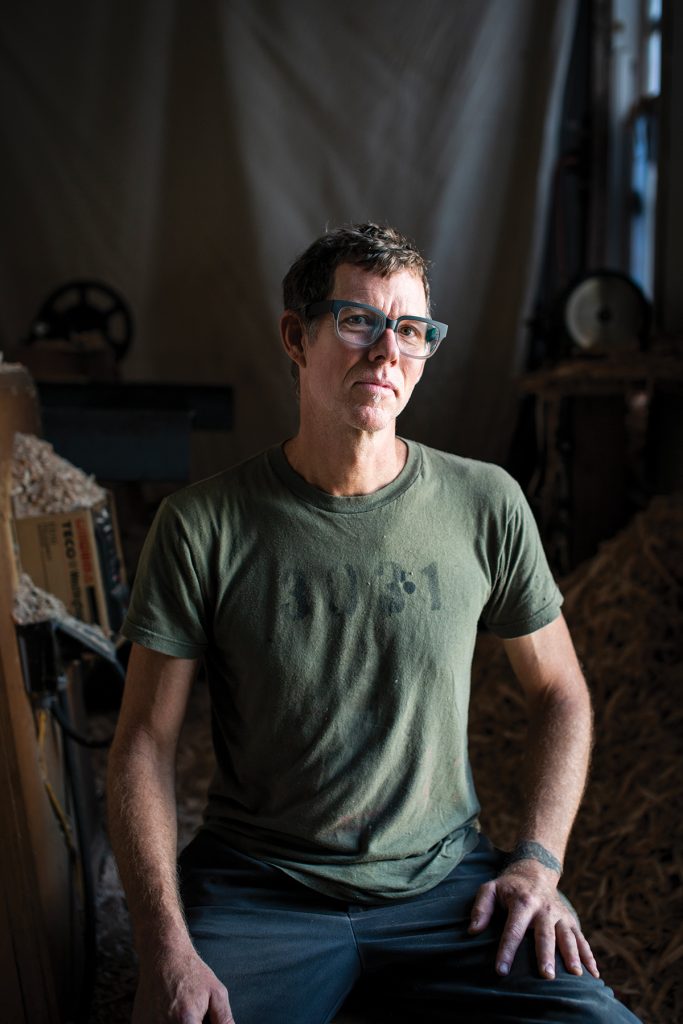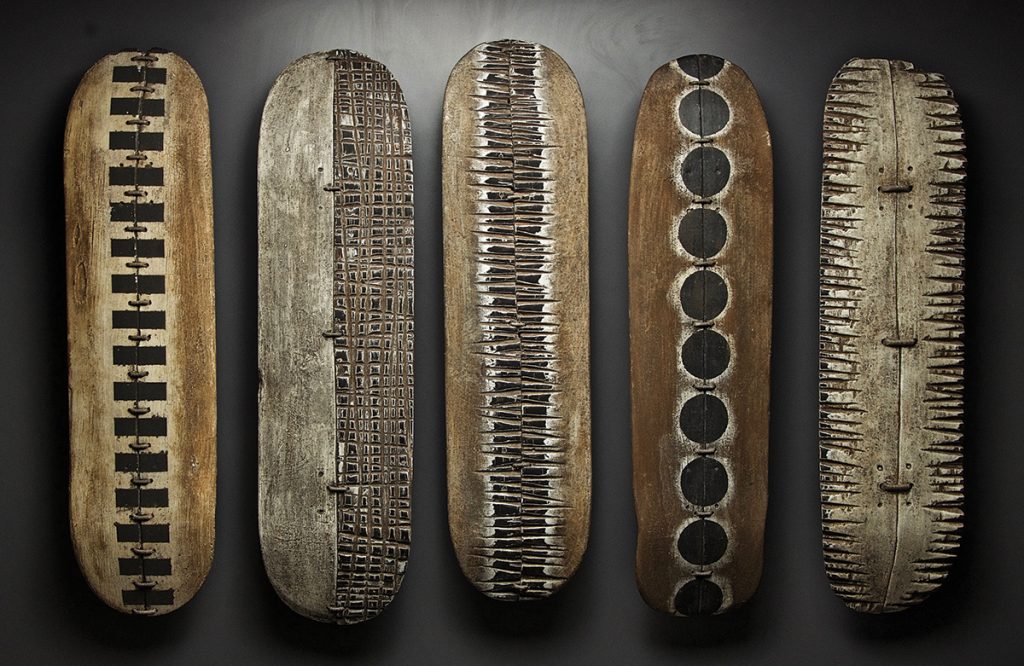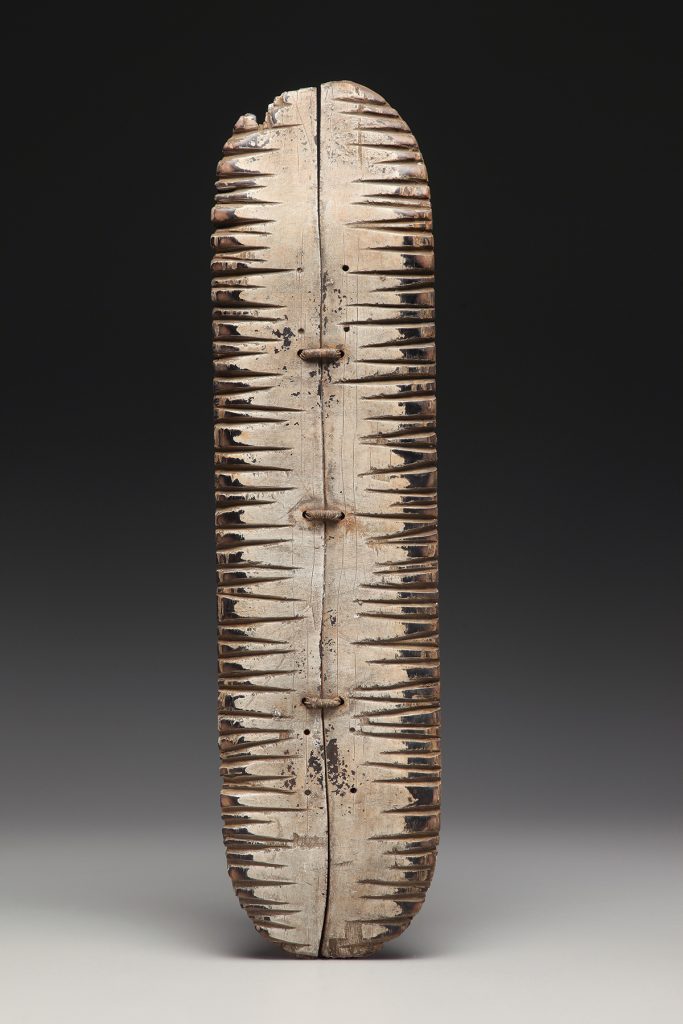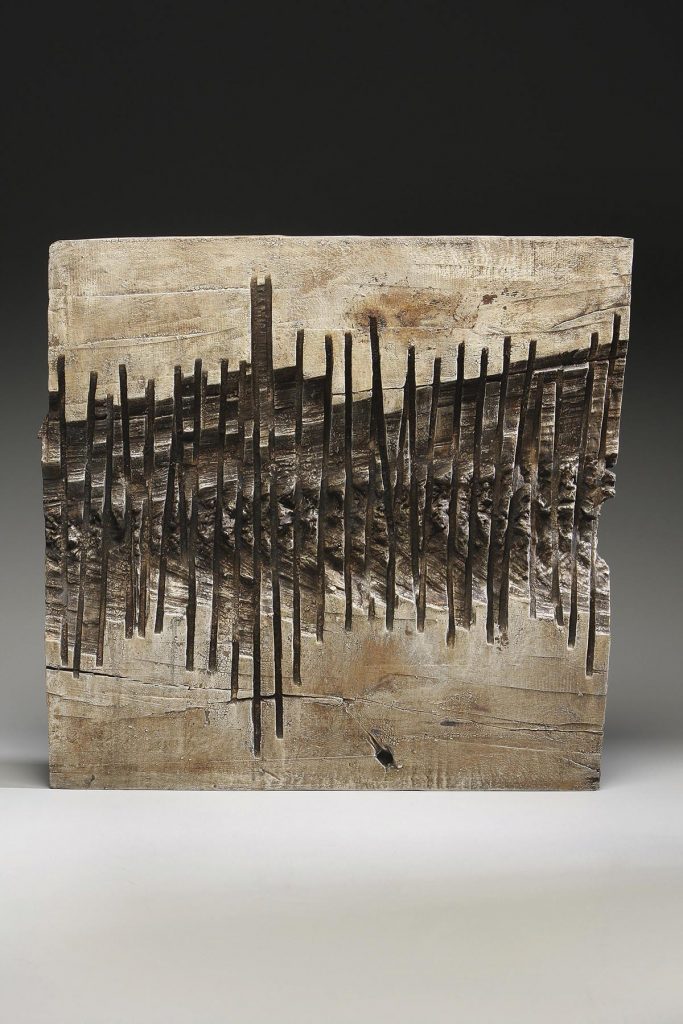
George Peterson of Circle Factory
Portrait by Karin Strickland
The year 1989 was a kickflip to the ankle for lifelong skateboarder George Peterson. Stuck in his sleepy hometown of Bishop, California (population 3,747), a 24-year-old Peterson was served a one-two punch: First, he lost his construction gig. Second, he lost his girlfriend.
“I had no idea what I would do,” he reflects. “I tried college and failed three times, tried screenprinting, tried newspaper delivery. I figured I was just a working-class dude.”

Photo by Karin Strickland
Even before then, Peterson felt a little lost. Growing up, he considered himself a “marginal underachiever” who eschewed homework for half pipes — he started skateboarding when he was six — and who filled his high-school schedule with woodshop classes: “Those classes were full of slackers.” He laughs as if to add, “myself included.”
But 1989 felt more definitive, more pivotal. He craved a vocation. “My aim was to fill my day with something satisfying I could feed myself with,” says Peterson. Woodworking fit the bill. It paid them, too.

Today, Peterson is exactly what you would expect if a Cali skater grew up to be a renowned woodturner and sculptor. Sporting low tops and a chainsaw, he exposes the “muscular tension” of oak logs, pine forks, and whatever else finds its way to the Circle Factory, his studio and gallery in Brevard. The wood’s natural character is then carefully refined through more sawing, chiseling, and heat.
The resulting carvings and black-washed slabs are dramatic, even tribal in aesthetic. Peterson cites as inspiration an African dogon door, embellished with symbols that invoke spirits for protection, that he received from his wife’s aunt.

Still, the pieces feel unfettered. “I honestly goof around with the tools. I’ll get on top of the wood with a one-inch chisel and just start wailing on it,” says Peterson. “Modern woodworking has a certain perfectionism to it. My stuff is loose. It has spontaneity.”
This is most evident in his “Lingo” series of wood sculptures created from used skateboards. In 2008, some 16 years after Peterson established his first full time studio in a Colorado carport, he realized that skateboard “decks” (the board without the wheels) could be sculpted into upcycled art. Over time, the series has evolved into a fundraiser of sorts for The Foundation Spot, a volunteer-based skatepark on Foundy Street in Asheville’s River Arts District. For every donated deck, Peterson has contributed $5 for park upkeep.

The project is a subtle reminder of Peterson’s beginnings in Bishop, as his CV makes no mention of his early days in newspaper delivery or construction. Rather, it lists the artist’s inclusion in prestigious venues, including at the Boston Fine Arts Museum and the Minneapolis Museum of Art. Peterson’s work is represented by galleries as far away as Tokyo and is included in numerous private collections and in high-end hotels. Last decade, his maplewood “Apple Bowl” — a collaboration between Peterson and Larry Schaffer, the owner of artisanal home-goods store OK in Los Angeles — was purchased for the White House by Michael S. Smith, the Obamas’ interior designer.
“The undulating, carved rim [of the bowl] shows the influence of Finn Juhl, a Mid Century Finnish designer,” notes Peterson. “The piece also has my signature elements of visible tool marks and hand-carved bottom.”

This level of esteem seemed unlikely in 1989. “If you want something, go after it,” Peterson advises. “If you don’t, you’ll later think, ‘What the hell did I do?’”
George Peterson, Circle Factory, 162 West French Broad St., Brevard. Peterson is represented locally by Blue Spiral 1 (38 Biltmore Ave., Asheville, bluespiral1.com) For more information, visit circlefactory.com.